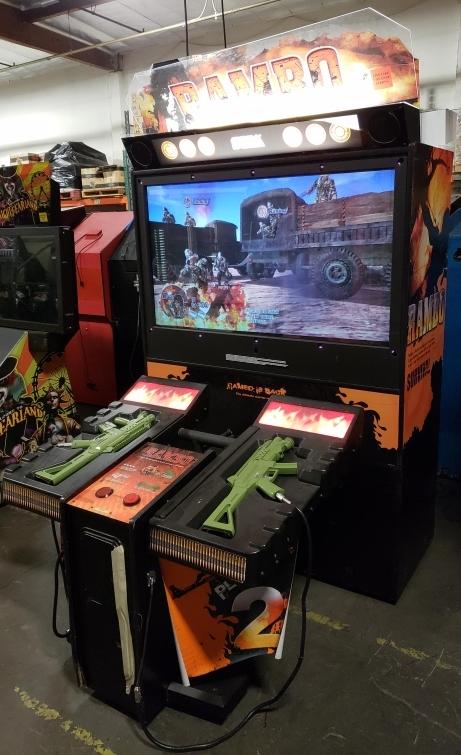

In addition, the game also features non-shooting segments, such as defeating an enemy in hand-to-hand combat, sneaking past enemies without being spotted, and shooting targeted areas without missing.

Some enemies attack Rambo with grenades or rockets, which can be shot and destroyed in mid-air. Each level consists of the player shooting down waves after waves of enemy soldiers if the player waits too long to kill an enemy, the enemy will attack and the player will lose one of their lives. Trautman, from an enemy prison (also from Rambo III). The first and final levels are based on the desert battle from Rambo III, the second and third levels focus on Rambo rescuing the prisoners from Rambo: First Blood Part II, and the fourth level consists of Rambo rescuing his mentor, Col. The player assumes the role of John Rambo, fighting through five levels. The game is based on Rambo: First Blood Part II (1985) and Rambo III (1988), but not First Blood (1982).

This game is part of a large collection of Mega Drive games in The Strong's collection that represent nearly 100% of all games released for that system.Rambo is a light gun shooter developed by Sega for the arcades in 2008. Mega Drive games also received re-release as part of collector's editions for the Sony PS2 and PSP, and other systems, as well as being available for download on the Nintendo Wii Virtual Console. Games continued to be released internationally as recently as 2002. The first successful 16-bit system, the Mega Drive's 14-year lifespan places it second only to the Nintendo Game Boy. With seven distinct versions, it also has the largest number of licensed versions of any console. The Mega Drive/Genesis also supported a number of add-on components (32X, CD, Power Base Converter), making it one of the most flexible systems ever developed. The Genesis could do things that the NES simply couldn't. Sega also focused attention on its better graphics, speed, and sound, especially after the release of Sonic. These efforts were often successful, as Sega marketed the Genesis as hip, cool, and edgy. In addition to porting over popular coin-op games, Sega executives worked hard to lure developers away from Nintendo. Dubbed the Genesis, this version was developed with the American market and consumer in mind. A year later, Sega released the Mega Drive in the United States. Released in 1988, the Sega Mega Drive heralded the coming of the 16-bit era and inaugurated the Console Wars of the 1990s.


 0 kommentar(er)
0 kommentar(er)
